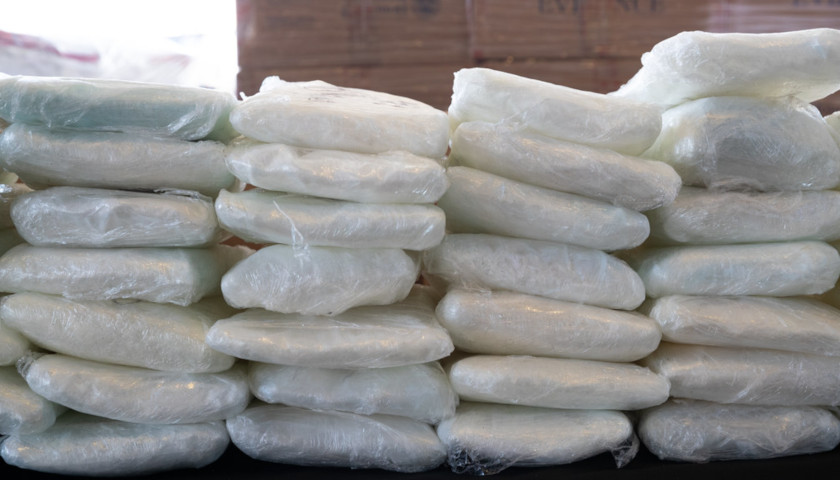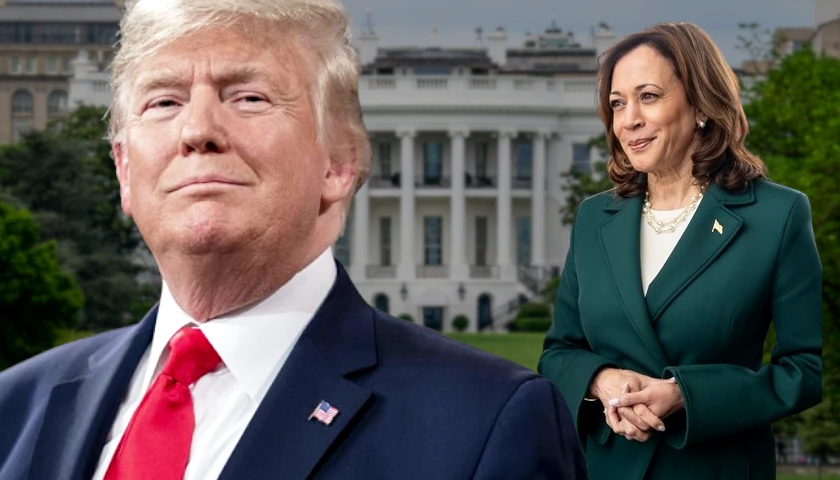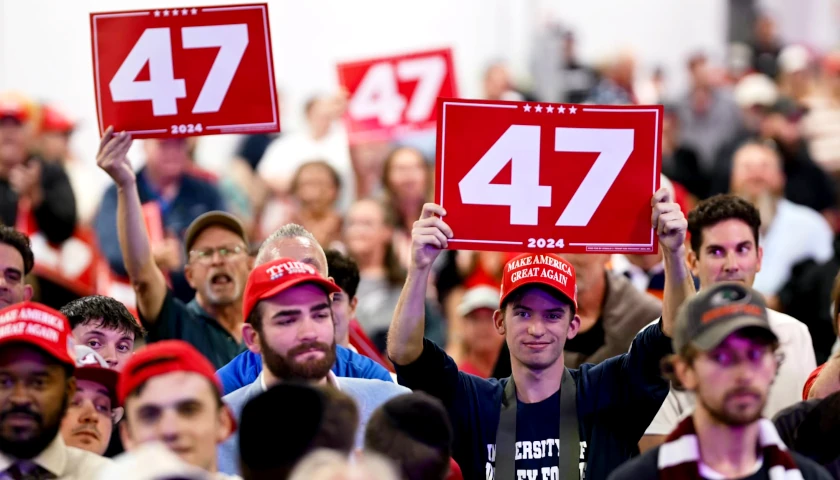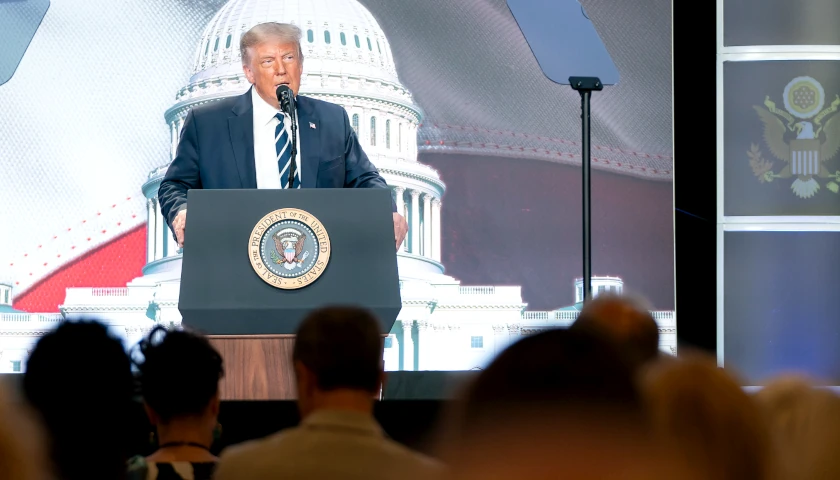by Vince Bielski
U.S. drug agents are expanding operations in China – six years after America’s largest trading partner and global rival emerged as the main source of chemicals used to make highly lethal fentanyl. It’s now claiming 65,000 American lives a year.
The small crew of about a dozen Drug Enforcement Administration agents, including those in new outposts in Shanghai and Guangzhou, is nearly double the number in 2018. They face what seems like mission impossible: collaborating with Chinese agents to try to bust traffickers hidden somewhere in a sprawling export supply chain that’s linked to 160,000 companies.
“It’s such a massive chemical industry, and then there are layer upon layer of traders, brokers and freight forwarders,” says Russ Holske, the DEA’s director for the Far East, who set up the new offices in China before he retired. “It’s a daunting challenge.”
The DEA’s predicament in China is part of a larger one at the beleaguered agency, whose mission is to break up major drug trafficking rings worldwide. Fentanyl, a synthetic opioid that’s mostly made in Mexico with Chinese chemicals, is the deadliest illicit drug ever sold. It’s behind the record number of overdose deaths that keeps growing each year. But the DEA is facing this menace after suffering a series of blows that has left it a smaller and less aggressive and effective outfit, according to several former special agents, high-ranking officials and agency documents.
Some of the damage has been self-inflicted. An embarrassing sex scandal involving agents in Colombia and a botched operation that took four civilian lives in Honduras have made Congress wary of the agency. It was left to drift without a Senate-confirmed leader for half a decade, and retreated from some foreign operations, as fentanyl was beginning to leave its lethal mark on the streets.
The DEA also has been swept up in the country’s turn against law enforcement as a force for good, leading to morale problems that afflict police departments as well as the Border Patrol. Hundreds of DEA agents left and weren’t replaced, sapping it of its crime-fighting prowess. Some academics, along with the Drug Policy Alliance, which advocates for decriminalization, are even calling for the group to be eliminated.
“Yes, the DEA should be disbanded,” says sociologist Alex Vitale, author of “The End of Policing.” “They have two strategies, interdiction and criminalization, and neither is working.”
The agency declined to comment for this story.
Restoring DEA’s Urgency
Critics such as Vitale blame the agency for the easy availability of narcotics like heroin in every part of the country. But that’s not entirely the DEA’s fault. With a force of 4,700 agents – a third the number of FBI agents – the DEA is up against sophisticated transnational criminal organizations. Mexico’s Sinaloa Cartel alone rakes in several billions of dollars in revenue a year, according to estimates. That’s about the size of the entire DEA $3 billion budget.
With DEA offices in 69 countries, its ability to crack down on cartels depends on the cooperation of foreign leaders. The agency has apparently found a willing partner in China, which banned a half-dozen fentanyl substances that traffickers were shipping to the states. As clandestine chemists circumvented the restrictions by tweaking the molecules of the substances to create new ones, China got tougher, outlawing the entire class of fentanyl drugs in 2019. This win for the DEA reflected a collaboration with China not enjoyed by other U.S. agencies.
“China, to its credit, helped us quite a bit,” says Holske, the former DEA director. “The controls tightened the pipeline of fentanyl that was coming directly to the U.S. and killing Americans.”
But Chinese traffickers quickly found another workaround by selling the chemicals to make fentanyl to cartels in Mexico, which put up roadblocks to DEA agents. In the past year alone, Mexican President Andres Manuel Lopez Obrador has delayed visas for agents and restricted intelligence sharing in protest of the DEA arrest of a former defense minister on drug-related charges.
U.S. officials recently pressured Mexico to restore some cooperation with DEA agents in pursuit of the Sinaloa and Jalisco New Generation cartels – the biggest producers of fentanyl powder and counterfeit pharmaceutical pills laced with it. The cartels smuggle the contraband into the states at official ports of entry and along open patches of the border left unguarded as Border Patrol agents are diverted to deal with another crisis – the surge of migrants.
Still, the DEA’s interdiction efforts may have saved thousands of lives. In August, a two-month domestic enforcement surge nabbed 850 dealers and added to the total of more than 15 million fake pills seized in the past year. Some 40% of those pills contained a potentially lethal dose of fentanyl, which is 50 times more potent than heroin.
The agency could be more effective, some former agents say, if it revived its aggressive pursuit of international cartels and replenished its ranks. President Biden did appoint a permanent DEA chief, Anne Milgram, who has a record as a law enforcement reformer who gets results. But the administration’s fentanyl strategy focuses heavily on increasing drug prevention and treatment – a long-term approach that can curb overdose deaths only if the drug supply on the streets is also reduced by law enforcement agents, according to treatment experts.
“I cut my teeth as an agent on the street. We were risk-takers and aggressive in everything we did to put bad guys in jail,” said Jack Riley, who was the DEA’s second-in-command before retiring in 2017. “But we have lost that sense of urgency. We need to get that back to be more effective.”
Taking Down Medellin
Riley, who helped put Sinaloa’s most notorious leader – Joaquin “El Chapo” Guzman – in prison, says the agency has proved its mettle over the years. Consider the dismantling of Colombia’s Medellin and Cali cartels in the 1990s. Medellin’s leader, Pablo Escobar, led a murderous campaign against government officials and became a threat to the country’s democracy. Although new cartels grew out of the ashes of Medellin and Cali – showing that law enforcement alone won’t end drug trafficking – the killing of Escobar was itself a win, says David Gaddis, a former DEA agent in Colombia and high-ranking official.
“Escobar tried to take over the Colombian government and he was almost successful,” Gaddis says. “The new cartels do not have the same influence over the government as Medellin did. That’s a success for DEA.”
The DEA bagged several other drug kingpins before the agency lost some of its luster. Agency veterans date the DEA’s decline to 2015 after revelations that 10 agents had participated in “sex parties” in Colombia with prostitutes paid for by the cartels.
The uproar in Congress led to the departure of DEA Administrator Michele Leonhart, a former agent who embodied the agency’s boldness. Leonhart’s 2015 exit was followed by a parade of five acting administrators over five years.
Putting a Rein on Agents
First up was Chuck Rosenberg, a prosecutor who aimed to rein in what some saw as a cowboy mentality. Edicts from headquarters instructed agents to be more careful in carrying out operations. Leaders feared a questionable shooting could derail the DEA in the wake of the 2014 police killing in Ferguson, Mo., says Jeffrey Higgins, a former special agent for two decades.
The biggest pullback was overseas. DEA had built a large special forces operation of about 125 personnel to battle narco-terrorists in Afghanistan. The operation paid off with the conviction of Haji Bagcho, the world’s biggest heroin trafficker. But after the killing of Americans in Benghazi in 2012, the Obama administration reduced the DEA’s presence in Kabul to only a handful of agents, says Riley.
Rosenberg then disbanded the DEA’s FAST units, a paramilitary force that assisted local officers in high-risk operations. A 2017 inspector general report found that FAST agents were involved in an operation in Honduras in which four likely bystanders were killed. The end of FAST marked a shift in DEA strategy to focus more on domestic smugglers and street gangs. Some agents opposed it.
“It makes no sense,” says Higgins, who worked in about 50 countries. “It’s far more effective to put resources into dismantling a major global exportation organization than to go downstream and take out one of 30 U.S. distribution groups that get the drugs from that criminal organization.”
Citing differences over policing with new president Donald Trump, Rosenberg resigned after two years and became an MSNBC commentator. His replacement at DEA found that the “acting administrator” title was worthless and walked after eight months. Next up was Uttam Dhillon, a former federal prosecutor in Los Angeles then on Trump’s White House staff. He didn’t understand the DEA’s organizational issues and lost the support of agents, Riley says. He was replaced in 2020 by another short-lived acting head.
The churn at the top produced disillusionment in the ranks. Many agents retired early or just quit the agency, leaving the DEA down 700 agents compared to a decade ago. Foreign offices shrunk by a quarter. Predictably, the number of crime organizations that agents disrupted or dismantled worldwide plummeted by one-third – from 2,735 to 1,869 – between 2016 and 2020, according to DEA’s recent report to Congress.
The timing couldn’t have been worse. The DEA was losing muscle just as Chinese traffickers were increasing shipments of illicit fentanyl to the U.S. The agency had finally gotten a handle on the oversupply of prescription opioids like OxyContin that were killing an alarming number of Americans. But now fentanyl, a more deadly synthetic opioid, was filling the void.
A Conundrum in China
The DEA led a full-court press to get China to ban fentanyl, an array of spinoffs and the chemicals to make them. Starting in 2014, acting DEA chiefs, Justice Department officials and chemical experts began holding regular meetings with their Chinese counterparts in Washington and Beijing to press for the restrictions.
China has long taken a hard line against drug traffickers, which created some common ground for the rival superpowers to cooperate despite tensions about trade and human rights. The secretive courts in China have handed out death sentences to those convicted of major drug offenses. Recent cases involving Canadian and Australian nationals have sparked protests from Amnesty International and pleas for leniency from foreign officials. But China’s harsh punishments weren’t an issue in the successful bilateral talks over the criminalization of fentanyl, perhaps because no Americans were facing the death penalty.
The fentanyl bans don’t mean much, however, if they’re not enforced. While Chinese authorities have curtailed shipments directly to the U.S., the DEA says, traffickers are supplying Mexican cartels with enough of the precursor chemicals – some of them also outlawed – to flood the states with deadly pills and powder. U.S. border agents seized 10,600 pounds of fentanyl in fiscal 2021, more than twice the prior year. That’s a small fraction of the amount that reaches cities like New York, Chicago and San Francisco.
The biggest case in China to date was kicked off by U.S. agents who shared intelligence about the “Diana” criminal group with the Chinese Narcotics Control Bureau. The joint investigation led to the conviction of nine Chinese citizens for fentanyl smuggling in 2019. One defendant received a suspended death sentence and a few were sent to prison for life. Officials from both countries hailed the investigation, which continues today, as a sign of their expanding cooperation.
But while China has made several more fentanyl-related arrests, it doesn’t appear to have convicted any major traffickers in the two years since the Diana case. Some former DEA agents question how far China is willing to go in enforcing its bans since the U.S. would be the main beneficiary. While DEA agents in countries such as Indonesia join police in raids and debriefing defendants, in China they are unarmed and play a more limited role. Agents exchange intelligence and discuss cases with local officers but only occasionally work in the field.
At times agents also run into resistance from Chinese authorities, according to an August report by a congressional group that examines U.S.-China economic and security issues. “Chinese regulatory authorities continue to delay requests for access to inspect and investigate potential sites of illegal chemical production where precursors are made,” the report said. “Requests are often delayed for days, allowing any illegal operation to vacate or clean up the premises.”
The Chinese Embassy in Washington issued a strongly worded rebuttal in September, showing the tenuous nature of China’s cooperation with the DEA. The embassy called the assessment that Chinese precursors are flowing to Mexico and that authorities obstruct the work of U.S. agents “utterly false.”
“It is disappointing that for all the goodwill and sincerity of the Chinese side,” the embassy said, “some American politicians and media are still hyping up such disinformation.”
New Leaders Take Charge
Milgram, the new DEA chief, has an advantage that eluded her predecessors in the global war on fentanyl. She won Senate confirmation in June, giving her the authority to reshape the troubled agency at a pivotal time.
Milgram has a record of bringing innovative, data-driven approaches to law enforcement agencies that still tend to operate on gut instinct and perform poorly. After New Jersey took control of the Camden police because of the city’s alarmingly high crime rate, Milgram, who was the state’s attorney general, used data analysis to shake up the department. In 2009 murders fell by 38% from the prior year by making cops walk the streets and confiscate guns.
At DEA, she is preparing to make changes too. In August the administrator began a top-to-bottom review of foreign operations supervised by a team of outsiders, saying she’s looking for “areas of improvement” as well as “controls to ensure integrity and accountability.” She also tapped the politically savvy Jon DeLena, an associate special agent in charge, to examine how the agency can repair relations with Congress, which is crucial to funding and hiring agents, says Riley, the former deputy.
In another move in August, Milgram brought back Lou Milione as her deputy. Riley says the veteran of special operations was known for his “kick ass” leadership against cartel bosses. Milione’s return may signal a revival of a more aggressive approach to the kind of global crime groups that run the fentanyl trade.
“He’s a smart guy and he really understands the good results you get from targeting the international cartels,” says Higgins, the former FAST agent who helped take down Haji Bagcho.
In October, Milgram for the first time faced the killing of one of her agents. The shooting death of group supervisor Mike Garbo in Arizona rocked the DEA – a reminder of the added dangers when there are fewer agents in the field. The administrator spoke at the memorial service. Her detailed account of Garbo’s talents made a strong impression on agents, whose support she needs in her efforts to revive the DEA, Riley says.
“Milgram will make changes,” he says. “But she has a huge challenge with fentanyl. China and Mexico have to do much more to stop it. The DEA can only do so much on its own.”
– – –
Vince Bielski, a former senior editor at Bloomberg, reports on the environment, clean energy, education, and immigration for RealClearInvestigations. His work has appeared in Bloomberg, Spin, Mercury News (San Jose), San Francisco Focus, and many other publications.




